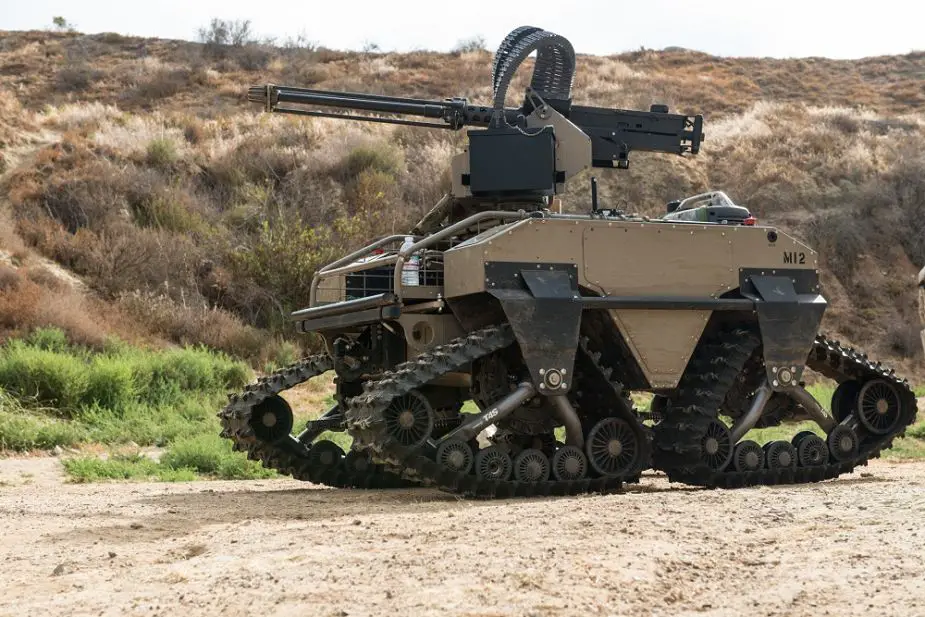The robotization of arms and hardware is a breakthrough achievement of the XXI century which will exert a major impact on the concept and forms of engagement of the armed forces of the developed nations in the foreseeable future, the Military-Industrial Courier writes.

Russian Uran-6 unmanned multifunctional demining system. (Picture source Army Recognition)
In the XXI century, robots staged a revolution in military affairs. Various drones are widely used, robotics are introduced into ground, underwater and space spheres of armed standoff.
There is a trend to create autonomous robots who will partner with people and operate in teams to create new combat formations.
Today some robots can deal with specific combat missions better than people. As the software develops, the engagement of robots in troops will considerably expand. By 2025, the US ground forces are to comprise 30 percent of various robotized means. Accelerated development of new arms production technologies with artificial intellect will allow launching batch production of ground robotics for a whole range of combat missions.
US experts believe that a fast pace of robotic development will reduce the strength of tactical brigades by a quarter in the coming years - from four to three thousand men. The trend shows that quality changes are in store for the organizational matrix, technical equipment and combat capabilities of the ground forces in the near future.
Russia created the Uran family of robotic means for the ground forces. They have a various designation. Uran-6 is used to clear mines. Uran-9 is a multirole device capable of street fighting and destroying tanks, armor and infantry. The vehicle can carry various arms depending on the modification. Uran-14 extinguishes fires and clears debris. Robots increase the combat potential of the Russian units, decrease losses and cut the strength of formations.

U.S. Marines with 3rd Battalion, 5th Marine Regiment tested new equipment such as the Multi-Utility Tactical Transport in a simulated combat environment at Marine Corps Base Camp Pendleton, Calif., July 8, 2016. (Picture source U.S. DoD)
The rapid and massive introduction of robots shall be promoted by their higher intellect and autonomy which will make them operate independently in various formations.
The creation of androids is a prospective guideline, however, it is a much more difficult business than initially perceived. Decades and major achievements in machine vision technology, as well as effective motors and computers, were necessary to produce the first androids capable of orienting in space, moving and doing simple work.
Today manlike robots learn to find their way, identify objects and recognize people by voice and face. Artificial intellect technologies make them act autonomously and independently make decisions. What will androids give in future? What are their advantages against specialized robots?
Firstly, androids can replace people in controlling sophisticated systems when human presence in an object becomes dangerous. Secondly, they can partially and then fully replace a soldier in arms engagement, i.e. driving armored vehicles, controlling aircraft and transportation means, firearms, etc. They will thus ensure a fast and cheap transition to a robotized army. Thirdly, androids are the most natural robots in psycho-emotional perception and rational and ergonomic indicators for interaction with humans. They can be conveniently transported in vehicles and operate with usual interfaces. Androids can assist people in any mission with ordinary tools.
Androids will be definitely engaged in the civilian sphere. Russia has created a manlike robot to operate in orbit. It is one of the most perfect androids in the world. The project was presented yet in 2013 at the Global conference of space research. In 2015, a combat robot-avatar was demonstrated to President Vladimir Putin by the Central Research Institute of Precision Machine Manufacturing (TsNIITOCHMASH). Developed nations continue to race in the development of perfect androids, however, their introduction into the armed forces is likely to happen next decade at the earliest.
















